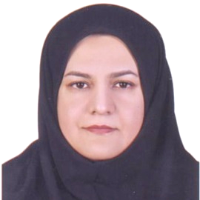Production of tailor-made fats from sunflower oil and soybean flake
Interesterification as an efficient tool in fat manipulation and producing tailor-made fats is an important process in oil technology. In this project random chemical interesterification was used as a substitute for hydrogenation to produce zero-trans fats, suitable for margarine and shortening production.
A mixture of sunflower oil and fully hydrogenated soybean oil (soy flake) (70:30 w/w) was interesterified, with sodium methoxide (0.5 %) as catalyst, at 110 °C, 100 mm Hg. vacuum, and 30-min processing time. The physical and chemical characteristics of the mixture, including slip melting point, acid value, iodine value, peroxide value, remaining soap, and moisture content, were determined before and after interesterification. In addition, in order to study the trend of random equilibrium before and after interesterification, the following were determined: the cis- and trans- (elaidic acid) fatty acid composition by gas chromatography (GC), the solid fat content (SFC) by NMR, and the type of fatty acid in the 2- position of triglyceride by enzymatic (lipase) hydrolysis, followed by thin layer chromatography (TLC) and GC.
The results showed that the tailor-made fats produced by interesterification had a significantly lower slip melting point (34 °C) compared to that of the mixture before interesterification (56 °C), which is considered suitable for producing shortening and margarine. As expected, the difference between the iodine values of the oil mixture and the structured product was not statistically significant. As a result of rearrangement of the fatty acid residues, SFC decreased and the SFC curve indicated better plastic properties in the product. The fatty acid composition did not change, indicating that the process had not affected the chemical structure of fatty acids, and the amount of trans isomers derived from the flake was constant (0.36 %). The product had a high content of polyunsaturated fatty acids, with P/S+T=1/13, implying better nutritional quality of the interesterified product, as compared to hydrogenated oil.
According to the results obtained, chemical interesterification for manipulation and rearrangement of fatty acid residues in triglyceride molecules, with a view to producing margarine and shortening base stocks with suitable nutritional and functional properties, is possible at a pilot scale. Continuation of the work at the industrial scale is recommended.
پرداخت حق اشتراک به معنای پذیرش "شرایط خدمات" پایگاه مگیران از سوی شماست.
اگر عضو مگیران هستید:
اگر مقاله ای از شما در مگیران نمایه شده، برای استفاده از اعتبار اهدایی سامانه نویسندگان با ایمیل منتشرشده ثبت نام کنید. ثبت نام
- حق عضویت دریافتی صرف حمایت از نشریات عضو و نگهداری، تکمیل و توسعه مگیران میشود.
- پرداخت حق اشتراک و دانلود مقالات اجازه بازنشر آن در سایر رسانههای چاپی و دیجیتال را به کاربر نمیدهد.


